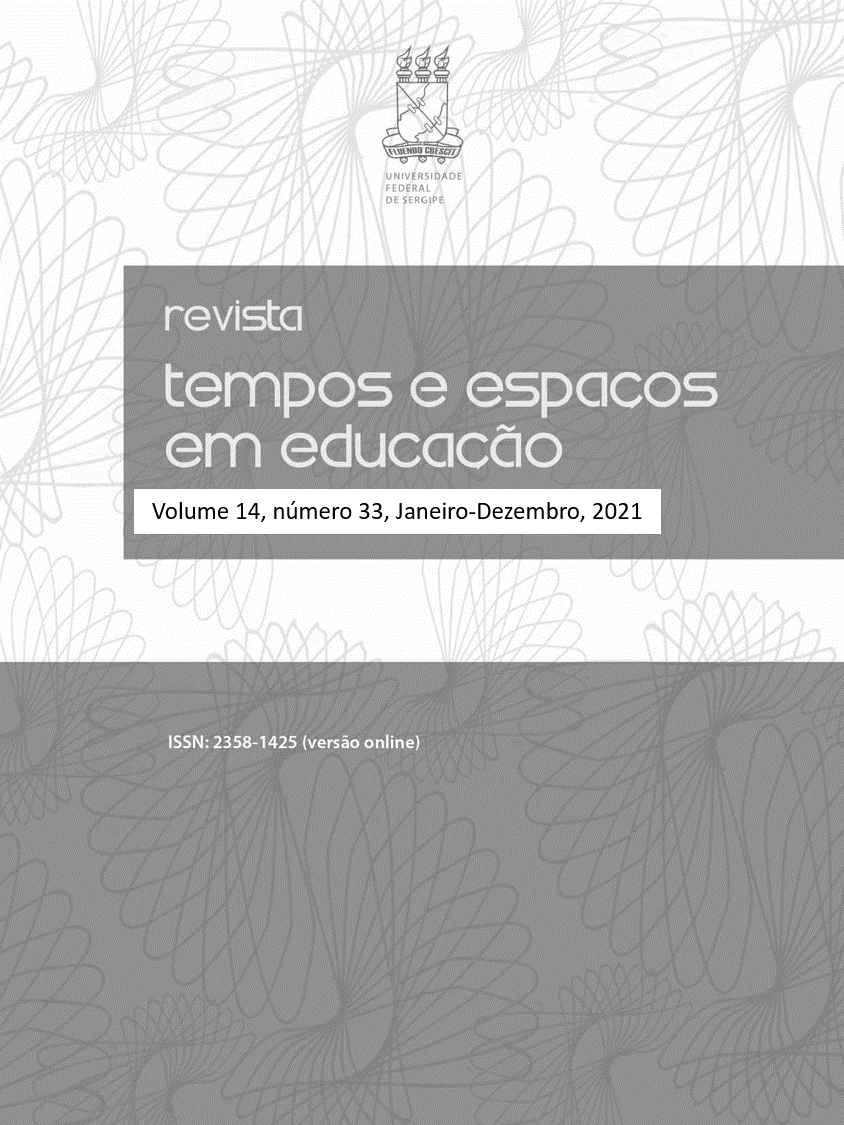Aprendizagem de línguas estrangeiras e reconstrução de identidade: compreensão da interação do self
DOI:
https://doi.org/10.20952/revtee.v14i33.15923Palavras-chave:
Mudanças de identidade, Prática linguística, Atitudes linguísticas, Interação de proficiência em inglêsResumo
Este estudo enfoca os processos e relações entre a identidade do aluno de língua estrangeira e a interação com a proficiência em língua estrangeira associada ao aprendizado de inglês em institutos privados de línguas no contexto iraniano, especialmente, as crenças dos participantes sobre as línguas e as visões dos participantes sobre a questão da língua são analisadas. Esta análise integra as práticas e crenças do falante a questões de construção e negociação de identidade que são observáveis em dois contextos. Alguns alunos de inglês como língua estrangeira de 3 institutos de idiomas em Teerã foram selecionados para participar do estudo, com base em uma amostra estratificada. O instrumento foi um questionário em escala de Likert de 30 itens sobre tipos de motivação e responsabilidade social, desenvolvimento individual, meio de informação, ... 24 questionário em escala de Likert sobre mudanças de identidade, tais como mudança de autoconfiança, mudança subtrativa, produtiva mudança, os resultados revelam que como as práticas de linguagem na interação humana exibem e constroem a identidade e a análise de correlação indicou que os tipos de motivação de autoidentidade mudam e sinalizam as negociações dos participantes sobre suas próprias identidades. Orientações instrumentais relacionadas com a mudança da autoconfiança do aluno.
Downloads
Referências
Auer, P. (1998). Code-Switching in Conversation: Language, Interaction, and Identity. Routledge.
Baker, C. (1993). Foundations of bilingual education and bilingualism. Clevedon, England: Multilingual Matters.
Bucholtz, M., & Hall, K. (2008). Finding Identity: Theory and Data. Multilingua -Journal of Cross-Cultural and Interlanguage Communication, 27, 151-63.
Dailey-O'Cain, J. (2017). Trans-National English in Social Media Communities. Palgrave Macmillan. Series on Language and Globalization.
Dörnyei, Z. (2005). The psychology of the language learner: Individual differences in second language acquisition. Mahwah, NJ: Lawrence Erlbaum.
Dörnyei, Z. (2009). The L2 Motivational Self System. In Dörnyei, Z., & Ushioda, E. (eds.), Motivation, Language Identity and the L2.. Bristol: Multilingual Matters, 9-42.
Dörnyei, Z., & Kubanyiova, M. (2014). Motivating Learners, Motivating Teachers. Building Vision in the Language Classroom. Cambridge: Cambridge University Press.
Ellemers, N., & Barreto, M., & Spears, R. (1999a). Commitment and strategic responses to social context, 127-46.
Gao, Y. (2007). Relationship between English learning motivation types and self-identity changes among Chinese students. TESOL Quarterly, 41(1), 133-155.
Gardner, R. C. (1985). The social psychology of language 4: The role of attitudes and motivation. Maryland: Edward Arnold.
Heller, M. (2010). Codeswitching, Anthropological and Sociolinguistic Perspectives. Mouton de Gruyter.
Jackson, J. W. (2001). Ingroup attitudes as a function of different dimensions of group identification and perceived intergroup conflict. Self Identity. In press.
Kozachenko, I. (2017). ICT and Migration. Horizon Scanning Report, (2013), http://2plqyp1eOnbi44cllfr7pbor.wpengine.netdnacdn.com/files/2013/01/ICT-and-Migration-Kozachenko.pdf. Accessed 20 Aug.
Lambert, W. E. (1974). Culture and language as factors in learning and education. In F. E. Aboud & R. D. Meade (Eds.), Cultural factors in learning and education (91-122). Bellingham, WA: Fifth Western Washington Symposium on Learning. Mckinlay and Mcvittie.
Norris, S. (2011). Identity in (Inter) action: Introducing Multimodal (Inter) action Analysis. De Gruyter Mouton/Trends in Applied Linguistic.
Nunan, D., & Bailey, K. M. (2009). Exploring second language classroom research: A comprehensive guide. Boston, MA: HEINLE, CENGAGE Learning.
Smith, E. R., Murphy, J., & Coats, S. (1999). Attachment to groups: theory and measurement. J. Pres. Psychol, 94-110.
Yin, K.R. (2011). Qualitative Research from Start to Finish. NY: Guilford Press.
Yin, K. R. (2018). Code-Switching and the Politics of Language. One Speaker, Two Languages, edited by Lesley Milroy and Pieter Muysken, Cambridge UP, 158-74.
Yin, K.R. (1992). The Politics of Codeswitching and Language Choice. Journal of Multilingual and Multicultural Development, 13(1-2), 123-42.
Downloads
Publicado
Como Citar
Edição
Seção
Licença
À Revista Tempos e Espaços em Educação ficam reservados os direitos autorais pertinentes a todos os artigos nela publicados. A Revista Tempos e Espaços em Educação utiliza a licença https://creativecommons.org/licenses/by/4.0/ (CC BY), que permite o compartilhamento do artigo com o reconhecimento da autoria.



